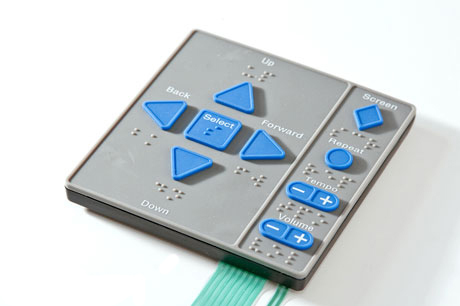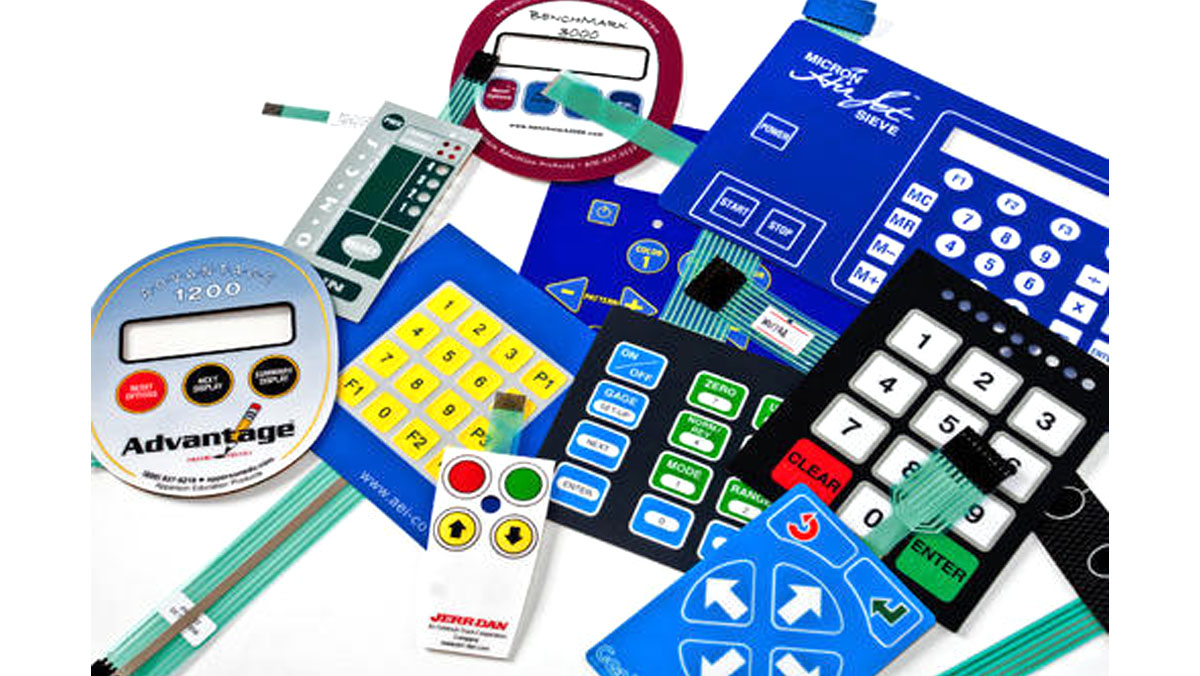Explore the Benefits of Using a Membrane Switch in Modern Devices
Explore the Benefits of Using a Membrane Switch in Modern Devices
Blog Article
Recognizing Membrane Changes: The Trick to Long Lasting and Reliable Controls

What Are Membrane Layer Buttons?
Membrane layer buttons are an innovative solution in the realm of user interface innovation, integrating performance and style flawlessly. These tools function as a user interface in between customers and digital systems, incorporating numerous parts into a compact format. Usually built from versatile, thin layers of materials, membrane switches are designed to react to touch, enabling users to interact with equipment and digital tools successfully.
The main aspects of a membrane switch consist of a published circuit layer, visuals overlay, and a spacer layer that stops unintentional activation. The graphic overlay can be customized to mirror brand name identification or individual preferences, boosting appearances while making certain use. Membrane buttons are commonly utilized in various applications, including medical devices, customer electronics, and industrial tools, owing to their longevity and resistance to ecological elements such as moisture and dirt.
One of the essential benefits of membrane buttons is their capability to endure wear and tear, making them ideal for high-traffic settings. Furthermore, they are light-weight and need minimal room, enabling ingenious designs in item development. On the whole, membrane switches over represent a practical and effective choice for modern-day electronic user interfaces, marrying innovation with user-centric layout principles.
Just How Membrane Switches Over Work
The procedure of membrane changes hinges on a straightforward yet effective mechanism that equates individual input right into digital signals. When a user presses the switch, the top layer warps, enabling a conductive component in the circuit layer to make call with an equivalent conductive pad on the underside of the graphic overlay.
The design of membrane switches can vary, however they usually incorporate domes or tactile elements to offer comments to the individual, improving the general experience - membrane switch. The materials utilized in membrane switches, such as polyester or polycarbonate, add to their toughness and resistance to ecological variables, consisting of dampness and dust. The published circuits are typically encapsulated, which secures them from wear and tear over time.
Advantages of Membrane Switches

Additionally, membrane switches are known for their sturdiness. Built from robust materials, they are resistant to dust, wetness, and physical wear, which substantially prolongs their life expectancy contrasted to standard mechanical switches. This toughness makes them especially suitable for high-traffic settings about his and applications calling for long life.
One more considerable benefit is the ease of cleaning and upkeep. The smooth surface area of membrane layer changes reduces dust accumulation and is often impervious to spills, making them ideal for setups that call for regular sanitization.
Furthermore, membrane buttons supply a streamlined profile, leading to a thinner layout that can be incorporated into various tools without adding bulk. This attribute not just enhances the visual charm but additionally adds to a much more ergonomic product style.
Applications of Membrane Buttons
Straightforward and flexible, membrane buttons discover applications throughout a wide variety of markets, consisting of medical devices, consumer electronics, and commercial devices. In the clinical field, these buttons are important to devices such as analysis equipment, person monitoring systems, and mixture pumps, where dependability and convenience of cleaning are critical. Their capability to withstand rough environments and keep functionality makes them suitable for such applications.

In consumer electronic devices, membrane layer switches are utilized in items like microwaves, washing devices, and remotes - membrane switch. Their sleek design enables instinctive user interfaces, improving the general customer experience while providing toughness and resistance to tear and wear
Industrial devices likewise profits from membrane layer switches, particularly in control panels for machinery and automation systems. These switches use defense versus dirt and moisture, guaranteeing constant performance in challenging settings. Furthermore, their customizable features allow producers to tailor them to certain functional requirements, improving performance and capability.
Selecting the Right Membrane Layer Change
When choosing a membrane switch, it is important to consider various variables that affect efficiency and suitability for specific applications. The primary factors to consider consist of environmental conditions, responsive responses, toughness, and style specifications.
First, assess the operating setting; buttons subjected to moisture, chemicals, or severe temperatures require details products to make sure durability and capability. Next off, review the demand for tactile feedback. Relying on individual interaction, some applications might benefit from a responsive action to confirm activation, while others might like a non-tactile design for visual reasons.
Durability is an additional vital factor; membrane layer switches must be developed to withstand regular usage, effects, and abrasion. Ensure the chosen switch can withstand the anticipated lifecycle, especially in high-usage circumstances.

Verdict
Finally, membrane switches over serve as essential parts in the style of durable and trusted control systems throughout different sectors. Their small design, integrated with robust building and customizable functions, enhances individual interaction while making sure longevity popular environments. The adaptability of membrane changes permits tailored services that satisfy certain functional needs, enhancing their significance original site in contemporary innovation. As industries proceed to evolve, the value of incorporating effective membrane button solutions can not be overstated.
Membrane layer switches over stand for a crucial aspect of contemporary interface style, blending performance with durability in different applications.Membrane layer buttons are an advanced option in the world of individual interface innovation, integrating functionality and style effortlessly. Generally constructed from versatile, thin layers of materials, membrane switches are designed to react to touch, making it possible for customers to connect with equipment and digital gadgets efficiently.
The design of membrane buttons can differ, however they typically integrate domes or tactile elements to give responses to the individual, improving the overall experience.In conclusion, membrane layer anonymous changes serve as essential parts in the layout of reputable and durable control systems throughout different industries.
Report this page